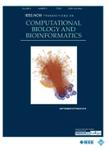版权所有:内蒙古大学图书馆 技术提供:维普资讯• 智图
内蒙古自治区呼和浩特市赛罕区大学西街235号 邮编: 010021

作者机构:Jilin Univ Sch Artificial Intelligence Jilin 132000 Jilin Peoples R China City Univ Hong Kong Dept Comp Sci Hong Kong Peoples R China
出 版 物:《IEEE-ACM TRANSACTIONS ON COMPUTATIONAL BIOLOGY AND BIOINFORMATICS》 (IEEE-ACM计算生物学与生物信息学汇刊)
年 卷 期:2021年第18卷第6期
页 面:2445-2458页
核心收录:
学科分类:0710[理学-生物学] 0808[工学-电气工程] 08[工学] 0714[理学-统计学(可授理学、经济学学位)] 0701[理学-数学] 0812[工学-计算机科学与技术(可授工学、理学学位)]
基 金:Research Grants Council of the Hong Kong Special Administrative Region [CityU 11203217, CityU 11200218] City University of Hong Kong [CityU 11202219] Natural Science Foundation of Jilin Province [20190103006JH] Hong Kong Institute for Data Science (HKIDS) at City University of Hong Kong
主 题:Transcriptomic profiling compressed sensing RNA-seq multi-objective optimization
摘 要:Transcriptomic profiling plays an important role in post-genomic analysis. Especially, the single-cell RNA-seq technology has advanced our understanding of gene expression from cell population level into individual cell level. Many computational methods have been proposed to decipher transcriptomic profiles from those RNA-seq data. However, most of the related algorithms suffer from realistic restrictions such as high dimensionality and premature convergence. In this paper, we propose and formulate an evolutionary multiobjective blind compressed sensing (EMOBCS) to address those problems for evolving transcriptomic profiles from single-cell RNA-seq data. In the proposed framework, to characterize various gene expression profile models, two objective functions including chi-squared kernel score and euclidean distance of different gene expression profiles are formulated. After that, multiobjective blind compressed sensing based on artificial bee colony is designed to optimize the two objective functions on single-cell RNA-seq data by proposing a rank probability model and two new search strategies into the cooperative convolution framework in an unbiased manner. To demonstrate its effectiveness, extensive experiments have been conducted, comparing the proposed algorithm with 14 algorithms including eight state-of-the-art algorithms and six different EMOBCS algorithms under different search strategies on 10 single-cell RNA-seq datasets and one case study. The experimental results reveal that the proposed algorithm is better than or comparable with those compared algorithms. Furthermore, we also conduct the time complexity analysis, convergence analysis, and parameter analysis to demonstrate various properties of EMOBCS.